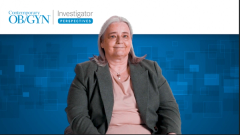
Lead Investigator Insights on Adjuvant Endocrine Therapy Landscape
A panelist discusses how endocrine therapy remains the cornerstone of treatment for hormone receptor–positive, HER2-negative breast cancer, emphasizing its role in reducing relapse risk and mortality while highlighting the importance of tolerability and individualized care across the subtype’s heterogeneous presentations.
Episodes in this series

Hormone receptor–positive, HER2-negative breast cancer is the most common subtype, accounting for about 65% to 70% of cases. The cornerstone of treatment for this subtype is endocrine therapy, which has been used for decades. Common agents include tamoxifen and aromatase inhibitors, with ovarian function suppression sometimes necessary for premenopausal women through LHRH agonists. Global guidelines recommend endocrine therapy for tumors with at least 1% estrogen receptor positivity, typically following local treatments such as surgery and radiation. The standard duration of adjuvant endocrine therapy ranges from a minimum of 5 years up to 10 years, although the optimal length for individual patients remains uncertain. Because treatment spans several years, tolerability and maintaining quality of life are crucial for patient adherence.
The outcomes within this subtype vary widely due to its heterogeneous nature. Some patients have tumors classified as luminal A-like, which are estrogen receptor positive and HER2 negative and have low proliferation rates. These tumors generally progress slowly but are prone to late recurrence, even decades after initial treatment. For example, research data have shown that even small node-negative tumors carry a roughly 10% risk of relapse over 20 years. Higher tumor burden, positive lymph nodes, or elevated proliferation rates correlate with increased relapse risk. Despite this variability, early detection and treatment have made breast cancer curable in 70% to 80% of cases. Risk assessments consider many tumor, patient, and treatment factors to guide individualized care.
Endocrine therapy significantly reduces relapse risk by about 50% and lowers breast cancer mortality by approximately 30%. It also offers a protective effect by reducing the incidence of cancer in the opposite breast. In some cases, agents such as tamoxifen and aromatase inhibitors are used preventively, such as in ductal carcinoma in situ with estrogen receptor positivity, to reduce the likelihood of invasive cancer developing later. These preventive uses highlight the dual role of endocrine therapy in both treatment and risk reduction for early-stage hormone receptor–positive breast cancer.
Newsletter
Get the latest clinical updates, case studies, and expert commentary in obstetric and gynecologic care. Sign up now to stay informed.














